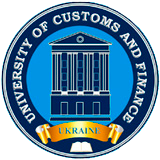DIGITIZATION OF COMPUTER SYSTEMS BASED ON ARTIFICIAL INTELLIGENCE
Abstract
The article investigated the use of artificial intelligence technology. It was determined that for the technology of artificial intelligence and machine learning there is no development of the role of people in the coexistence and use of the capabilities of the system of artificial intelligence and machine learning. We mean the systemic point of view of the interdependence of man and system. However, soon there will be a large number of systems using artificial intelligence technologies to help us with medical treatment, provide reliable transportation and support us in decision-making. It is obvious that the opportunities provided by modern technologies of artificial intelligence and machine learning have both their advantages and disadvantages. It has been investigated that the main advantages of systems with artificial intelligence support are: the possibility of dynamism of the learning process and adaptation, the potential of compatibility, which significantly affects the learning process. The disadvantages include the following: the main problem of artificial intelligence technology is that there is currently no generally accepted approach to implementation. The article analyzes the development of modern artificial intelligence technologies. The main modern solutions for digitalization of computer systems are analyzed. The key problems of the development of this concept and ways to solve them are studied, one of which is the technology of the digital immune system, the prerequisites for its emergence and the current state are given. The interrelationships of the main characteristics of modern digitalization solutions have been studied. The advantages of using solutions based on artificial intelligence in solving a wide range of tasks that arise in real life are analyzed. The theoretical basis for the analysis of recommendations for ensuring cyber security of critical infrastructures based on artificial intelligence is presented. A solution was developed for automatic analysis of LOG files based on AI using the Azure cloud platform and the Airflow user interface. Artificial intelligence and digitization of computer systems are two technologies that have great potential, both are already widely used. The combination of artificial intelligence and digitization of computer systems is relevant, because it can be a way to analyze shortcomings in the application of processes and technologies.
References
2. Software Engineering for AI-Enabled Systems (SE4AI). CMU 17-445/645, Summer 2020. URL: https://ckaestne.github.io/seai (дата звернення 20.11.2023).
3. Lombardo N., Millard D., Sturges M. A systems engineering framework for R&D organizations. INCOSE International Symposium. 2015. Vol. 25, No 1. P. 1020–1034.
4. Anderson N., Nolte W. Systems engineering principles applied to basic research and development. Session Title: Systems Analysis and Systems Engineering. URL: https://repository.gatech.edu/server/api/core/bitstreams/aa7c17ee-96cd-4eef-9144-5e5bf6d31b59/content (дата звернення 20.11.2023).
5. Vogelsang A., Borg M. Requirements Engineering for Machine Learning: Perspectives from Data Scientists. // 2019 IEEE 27th International Requirements Engineering Conference Workshops (REW). Jeju, Korea (South), 2019. pp. 245–251. DOI: 10.1109/REW.2019.00050.
6. Belan H., Vuković M., Car Z. Requirements engineering challenges in building AI-based complex systems. 2019. URL: arXiv:1908.11791 (дата звернення 20.11.2023).
7. Guizzardi R., Amaral G., Guizzardi G., Mylopoulos J. Ethical requirements for AI systems. Advances in artificial intelligence. 2020. pp. 251–256. DOI: 10.1007/978-3-030-47358-7_24.
8. Kruchten P., Nord R., Ozkaya I. Technical debt: From metaphor to theory and practice. IEEE Software, 2012. Vol. 29 No 6. pp. 18–21.
9. Hernández-Orallo, J. Evaluation in artificial intelligence: From task- oriented to ability-oriented measurement. Artificial Intelligence Review, 2017. Vol. 48. P 397–447. URL: https://doi.org/10.1007/s10462-016-9505-7.
10. McDermott T., DeLaurentis D., Beling P., Blackburn M., Bone, M. AI4SE and SE4AI: A research roadmap. Incose Insight, 2020. Vol. 23 No 1. P. 8–14.
11. McDermott T. A framework to guide AI/ML and autonomy research in systems engineering. Systems and Mission Engineering. 2019. Vol. 2. P. 234–241.
12. McDermott T. Digital engineering and AI ‑ Transformation of systems engineering. International Council on Systems Engineering. 2020. Vol. 1. P. 78–85.
13. McDermott T. Digital engineering and AI. AI welcomes systems engineering: Towards the science of interdependence for autonomous human-machine teams. 2020. Vol. 3. P. 163–171.
14. Chan K. Scaling Airflow to 1000 tasks/hour on Google Cloud Composer and Kubernetes, 2020. URL: https://medium.com/@keozchan/-airflow-to-1000-tasks-hour-aac3207b26ec (дата звернення 20.11.2023).

 ISSN
ISSN 




